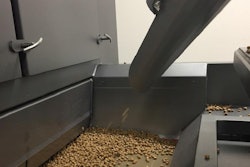
COVID-19 has caused global disruption at all levels as businesses have scrambled to take care of their employees, their products and their customers. Supply chains in many industries have been strained or broken entirely, most visibly at the retail end of things (e.g., toilet paper) and in shipyards where the wild swing of demands (or lack thereof) for goods combined with transportation issues have left imported cargo piling up at ports and in warehouses.
For pet food manufacturers, as with other food-related segments of the market, being prepared for supply chain disruptions is part of doing business. But for the current exceptional uncertainties, companies are taking things a step further: solutions so far have involved diversifying suppliers and looking into alternate methods of getting their product where it needs to go, lessons every industry is swiftly learning.
“The COVID-19 pandemic has hit global trade and investment at an unprecedented speed and scale,” said trade specialists with the World Economic Forum. “Multinational companies faced an initial supply shock, then a demand shock as more and more countries ordered people to stay at home. Governments, businesses and individual consumers suddenly struggled to procure basic products and materials, and were forced to confront the fragility of the modern supply chain. The urgent need to design smarter, stronger and more diverse supply chains has been one of the main lessons of this crisis.”
Transportation challenges possible for the pet food industry
One of the major struggles for the transportation industry has been an air capacity shortage due to a 95% reduction in passenger flights — flights which also transport mail. At the same time, a 25–30% increase in e-commerce demand (and the resulting increase in packages needing to be shipped) has served to overwhelm a global system that is short-staffed and under-resourced.
“The cancellation of more than 4.5 million passenger flights — the primary means of transporting post — has meant that capacity is scarce, costs more and takes longer,” said Universal Postal Union Director General Bishar A. Hussein at the beginning of May. “Action needs to be swiftly taken to address the shortfall in air cargo capacity and to keep the mail moving.”
The U.S. Postal Service (USPS) has shifted some international air mail to sea transport, resulting in extended timelines for international shipments of goods. On May 16, 2020, for example, the third of such sea transports departed the East Coast of the U.S. with mail slated for Austria, Denmark, Hungary, Poland, Sweden, the Czech Republic, Finland, Netherlands, Spain and Switzerland. The transport’s estimated arrival date to its scheduled port in Rotterdam, Netherlands, is June 9. Of course once the mail gets to port, it must go through unloading, Customs clearance, transit to central sorting, acceptance and sorting, and road transit to its final delivery. All of that, according to the USPS, can take 1–2 weeks.
On May 28, UPS announced peak surcharges on certain domestic shipments in the U.S., the first of their surcharges that will apply to domestic shipments (the company announced COVID-19-related peak surcharges on airfreight shipments from mainland China, Hong Kong and Europe in mid-March). FedEx has capped the number of packages some retailers can ship from certain locations to help control the increase in e-commerce orders and availability of shipping resources. Both entities suspended their service guarantees in March.
Some pet food manufacturers, particularly those with subscription services and online orders to fulfill, have been looking into more regional transportation options. Communication with customers, as always, has been key. By and large, consumers understand that these are exceptional times. But the average consumer has also likely not given much thought to how their orders arrive at their doorstep. For a world that is suddenly getting a crash course in the global supply chain, simply letting pet parents know why their product might be delayed, and what you’re doing about it, can go a long way towards gaining and retaining their loyalty.
Briefly: Get the bigger picture
Petfood Industry’s coverage of COVID-19’s effects on the pet food industry cover all angles to provide you with the most robust and accurate business picture possible. To gain more insights on current supply chain challenges and successes:
- Pandemic challenges global pet food ingredient suppliers
- Pet food industry supply chain intact during COVID-19
- Webinar: Pet food and COVID-19, part 1: Market and business outlook


















